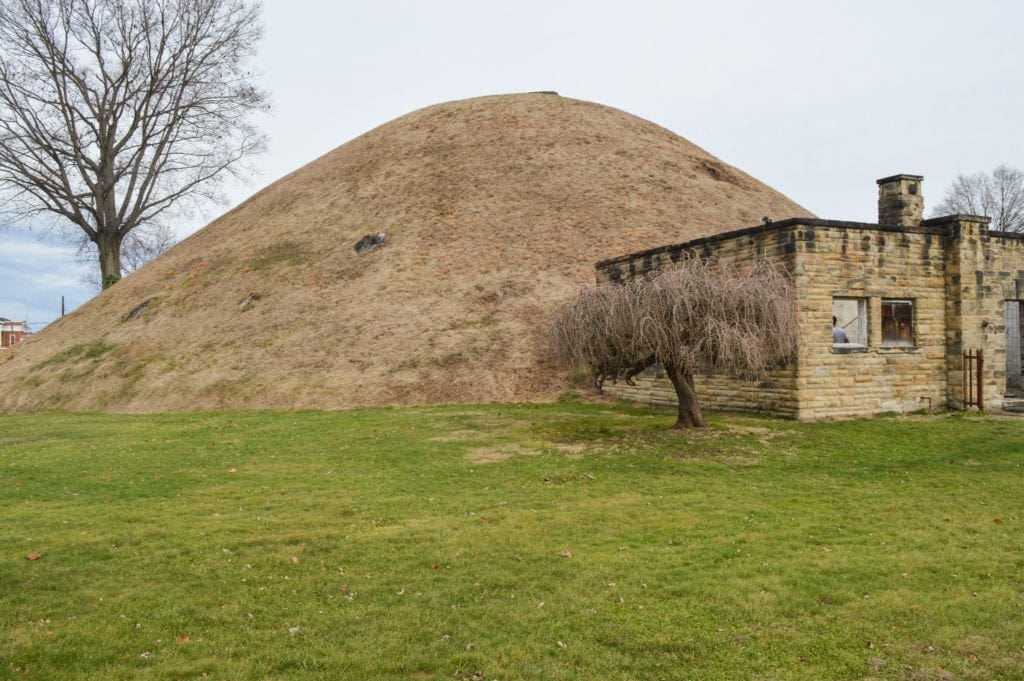It is called “The Rule of Tens,” and it is something of a law enforcement thing.
“It’s a popular thought I’ve heard my whole career that for each thing reported, there are 10 other things that go unreported,” explained Marshall County Sheriff Bill Helms. “And I tend to believe that’s probably correct or awful close to being correct. It just seems to have gone like that in my career, and I must not be alone if it’s as well-known as it is.”
The “Rule,” Helms believes, not only pertains to everything that would interest a member of law enforcement but also staff members at the Grave Creek Archeological Complex in Moundsville.
“Well, I’m willing to bet that when someone finds an arrowhead here in Marshall County or anywhere else in this valley, they don’t think twice about it because I believe most people who enjoy being in the woods have found one or more during their lifetimes,” the sheriff said. “But I sure would hope that if they found something that could tell a story about the history of the area where they found it, they would report it.
“That history is very important to a lot of people who are connected to it, so I would ask people to do what they know is the right thing,” Helms said. “You never know, either. Someone could find something that could open a whole new chapter of the history of Native Americans in this area because there’s no way we know everything.”

Down in the Dirt
Perhaps the most significant discovery from the county’s prehistoric years took place in 1991, when former deputy investigator Dan Livingston processed and extensively researched human remains found under a rock overhang above Fish Creek near Lynn Camp.
Those remains have since been determined as prehistoric and now are protected in the federal inventory at the Grave Creek complex.
But Helms recalled a time when a plethora of pieces of history was unearthed on an annual basis in an area of Marshall County known well for being a community region for Native Americans many decades ago.
“Of course, it’s very, very rare for the skeletal remains of a female and a baby to be discovered and reported. It was extremely out of the ordinary even for a place like Marshall County, where Native Americans were more than 200 years ago,” Helms said. “The history of Native Americans in Marshall County, though, is well documented, and a lot of that history can be found at the archeological facility in Moundsville.

“But there was a time when a gentleman named Merle Chaplin used to farm big sections of land near Meighen Bridge on Fish Creek. He would plant corn for his dairy cattle in those areas, and every time he would plow those fields, people would come out in droves,” he recalled. “In fact, I believe some folks from the museum would come out when he would plow because of the number of arrowheads and different things he would uncover. It was truly amazing.”
Those fields, though, fell silent once Chaplin passed away on Feb. 17, 2020, at the age of 83.
“And those properties aren’t farmed these days, but back some 20-30 years ago people didn’t have to look really hard to find things that were connected to that time in history,” Helms said. “Since Mr. Chaplin passed away, I’ve not seen anyone put any time in on that land, and you don’t hear anyone talking about the arrowheads or anything else anymore. Now, I don’t recall Mr. Chaplin exposing any human remains like those found that time in 1991, but there were more than just the arrowheads.
“That area is where Robert’s Ridge passes through Fish Creek, and it’s known that communities of Native Americans lived there when it was just them in Marshall County,” the sheriff added. “Now, arrowheads and other artifacts have been discovered in other counties here in the valley, and it is known that different tribes inhabited different areas. But Mr. Chaplin’s fields told a lot of stories for a lot of years.”

